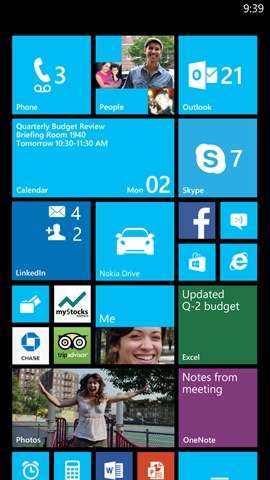| Microsoft Scales Down Windows Phone |
| Written by Mike James | |||
| Thursday, 09 July 2015 | |||
|
You can look at this as giving up or accepting reality, but as with most things it is more complicated. Has Microsoft finally given up on Windows Phone? If so what does it matter? Windows Phone probably should have been the big one. Microsoft had the opportunity to create a unique phone that would integrate with the most popular desktop operating system in the world. It didn't and Apple ran away with the success. What is harder to understand is why it was Google's Android that took the second place that should have been Windows Phone. How could it be that a completely new operating system attracted developers willing to learn something new when Microsoft had lots of developers dedicated to its platform, languages and APIs? The simple answer is that Microsoft changed direction so many times that it offered no continuity. From Windows Mobile, through Silverlight, to WinRT and back to Windows Mobile (in name only) things looked like a mess. If you throw in the move from WPF to Silverlight and from managed code to native then things look even messier. Even COM, the most hated of object technologies, was resurrected in WinRT. Microsoft even disowned Windows Phone 7 hardware when it dropped the Silverlight approach and went to WinRT. This is something users and developers don't forget easily. if you are charitable then perhaps it could be interpreted as rapid innovation, but it also looked like a fresh start for not other purpose than internal political maneuverings. The Windows 8 era will probably be looked back on as a time of technological insanity. Now Satya Nadella is trying hard to make something logical out of it all and his next step is to dump the huge phone making machine Microsoft acquired when it took over Nokia. The history behind this takeover will also be regarded as insanity when the dust finally settles. Nokia missed the smart phone boat just like Microsoft and adopted Windows Phone rather than Android to get its market share back. It seems likely that the idea was that Nokia would drag Windows Phone to market and with Nokia behind it things would improve. Of course, things only improved a little for Windows Phone and got a lot worse for Nokia. At best Windows Phone managed 10% market share in some countries but worldwide it only commanded 3%.
As Windows Phone dragged Nokia down Microsoft bought the phone making part of the company and now it is effectively closing it with a loss of $7.6 billion and 7,800 jobs. This is not Microsoft giving up on Windows Phone, now to be called Windows Mobile with the launch of Windows 10, but it is scaling back to the point where doing better than 3% doesn't look likely in the future. As Satya Nadella puts it in an email to employees: "I am committed to our first-party devices including phones. However, we need to focus our phone efforts in the near term while driving reinvention. We are moving from a strategy to grow a standalone phone business to a strategy to grow and create a vibrant Windows ecosystem that includes our first-party device family." It seems that Microsoft's Windows Mobile devices are going to be more low key and not blockbuster products. This probably means they will be more expensive and up-market - selling to users who want the extra. With Microsoft being the only manufacturer supporting Windows Mobile and with it too scaling back, there seems to be very little incentive for programmers to get on board and write code for the form factor - or is there? With Microsoft's new discovery of the idea of one code for all platforms things are suddenly looking possible. If Windows 10 Universal apps ever get the tools they need delivered, writing apps for Windows Mobile hardly becomes a problem. The same code should run on all three platforms - desktop, tablet and phone - with only small modifications to take into account screen size and capabilities. What is more, as programmers know the environment and the APIs they can start thinking about apps that run anywhere without having to learn much that is new. The only problem is that Windows 10 for phones won't ship at the same time as Windows 10 and there still isn't a credible development environment. We will have to wait and see how it turns out when the software is actually finished, but even then it is difficult to see how the availability of desktop apps running on all devices is going to be a force to encourage users to buy premium Windows phones. Then there is the small matter of the "bridges" which Microsoft is working on to allow iOS, Android and web app programmers to move their creations to Windows Phone. With almost no phones to run on it is difficult to see why this is at all attractive. It is probably a better idea to just drop the bridges idea and work on finding ways of getting Microsoft technologies onto iOS and Android.
More InformationSatya Nadella email to employees on sharpening business focus Related Articles
To be informed about new articles on I Programmer, install the I Programmer Toolbar, subscribe to the RSS feed, follow us on, Twitter, Facebook, Google+ or Linkedin, or sign up for our weekly newsletter.
Comments
or email your comment to: comments@i-programmer.info
|
|||
| Last Updated ( Thursday, 09 July 2015 ) |



